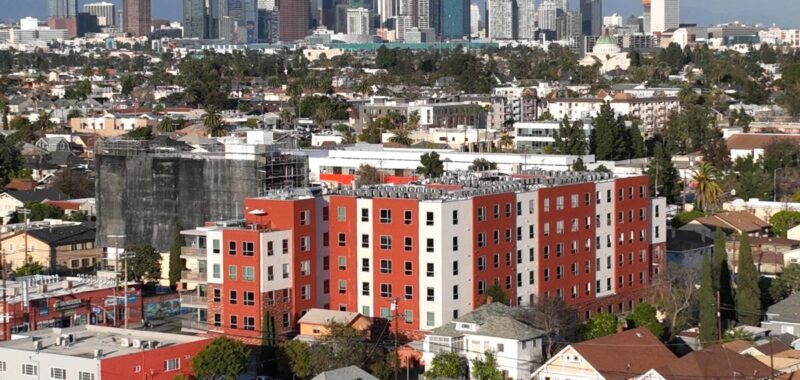Los Angeles’ “mansion tax” that funds affordable housing has likely led to a drop off in overall apartment construction, potentially worsening the city’s housing situation, according to a new report released Friday.
The study, from researchers at UCLA and Rand, focuses on Measure ULA — a voter-approved law that took effect in spring 2023. Though dubbed the mansion tax, the measure applies a 4% levy to nearly all property sales in the city over about $5 million, including apartment buildings, mini-malls and warehouses, and a 5.5% charge to sales above about $10 million.
In doing so, the real estate industry has argued that the additional costs to the buying and selling of land have made it too difficult to earn a profit on many new housing developments, thus killing potential deals.
The study released Friday supports that view, with authors basing their findings on a drop-off in sales of property where multifamily homes are typically built.
In all, researchers estimated ULA is causing a reduction of at least 1,910 units per year. Because apartments in the city often are built using density bonuses that require private developers to include some income-restricted housing, there’s also been a reduction of at least 168 affordable units annually, the report said.
“If we are building less housing, then the city is going to become even more unaffordable,” said co-author Shane Phillips, the housing initiative project manager with UCLA’s Lewis Center for Regional Policy Studies.
Los Angeles is not the only city where construction has fallen. Permits for new housing are down across the nation, as higher interest rates and material costs make it more difficult for developers to turn a profit.
ULA supporters have pointed to those rising costs to argue the measure isn’t having the negative impact its real estate industry critics claim.
Report authors attempted to adjust for that dynamic by comparing land sales in the city of L.A. to other areas in the county where transfer taxes were not increased. They found land sales dropped much more in the city, and used the difference to come up with their estimate of lost units attributable to only ULA.
In a statement, Joe Donlin, director of the United to House LA coalition behind the tax, said the report was based on “highly questionable assumptions” and furthered the interests of “real estate millionaires and billionaires.”
ULA backers have said in addition to interest rates, declining property sales may be attributed to some investors waiting it out while the real estate industry fights, so far unsuccessfully, to overturn ULA in court. They tout positive impacts the measure has brought.
In all, city data show the tax has raised nearly $633 million within two years. And the ULA coalition has said the has funded rental assistance for 11,000 Angelenos, paid for eviction defense and contributed money to the construction of 795 affordable homes.
ULA “has survived court challenges and referendum attempts from the real estate industry, and now, it’s the largest source of affordable housing funding Los Angeles has ever seen,” Donlin said.
However, Rand economist Jason Ward, who also authored the report, said the measure is hurting overall housing construction in several ways by extending beyond luxury home sales.
One, it reduces the number of land owners who want to sell in the first place, thus limiting opportunities to build. And many multifamily developers sell their projects to other investors after finishing construction, and would impacted by the tax again when doing so.
Even if developers plan to hold on to their new apartment buildings, they have mortgages on the property, and Ward said lenders must factor in the cost of a sale if the developer falls into foreclosure.
“They are going to either give you less money or give you money at a higher interest rate,” said Ward, co-director of Rand’s Center on Housing and Homelessness.
Ward and Phillips called for changes to the measure to limit its potential negative effects.
Not only do economists say that a reduction in market rate housing leads to higher rents, but the researchers argued that in the long run ULA will lead to a net loss in affordable units, as private developers of density bonus projects back away and ULA money isn’t enough to back fill the hole.
The 795 affordable units cited by the coalition, for example, only received a minority share of funds from ULA, with other sources making up most of the project costs. Some projects had also already started construction before receiving ULA funds and needed more cash to finish after they experienced cost overruns.
Phillips and Ward said that while ULA likely sped up the construction of 795 units, those homes probably would have been built eventually as other sources were cobbled together and that more affordable units would be built without ULA.
To ensure more housing is built, the report recommended exempting from ULA multifamily projects built within in the last 15 years, which the authors say would only reduce annual ULA revenue by 8% at the most.
“Negative outcomes are not inevitable,” the report reads, in calling for change.
The UCLA-Rand analysis follows a study released last week that found declining sales it attributed to ULA have led to a $25-million annual loss in property tax revenue, which will compound in coming years.

